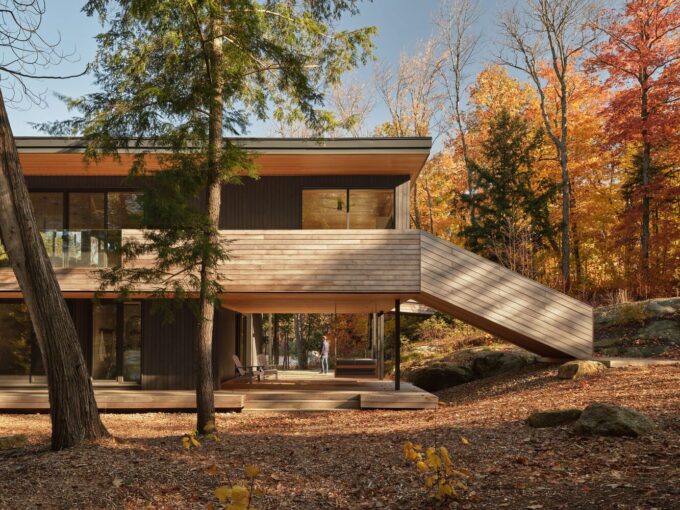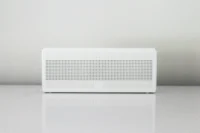- Home
- Articles
- Architectural Portfolio
- Architectral Presentation
- Inspirational Stories
- Architecture News
- Visualization
- BIM Industry
- Facade Design
- Parametric Design
- Career
- Landscape Architecture
- Construction
- Artificial Intelligence
- Sketching
- Design Softwares
- Diagrams
- Writing
- Architectural Tips
- Sustainability
- Courses
- Concept
- Technology
- History & Heritage
- Future of Architecture
- Guides & How-To
- Art & Culture
- Projects
- Interior Design
- Competitions
- Jobs
- Store
- Tools
- More
- Home
- Articles
- Architectural Portfolio
- Architectral Presentation
- Inspirational Stories
- Architecture News
- Visualization
- BIM Industry
- Facade Design
- Parametric Design
- Career
- Landscape Architecture
- Construction
- Artificial Intelligence
- Sketching
- Design Softwares
- Diagrams
- Writing
- Architectural Tips
- Sustainability
- Courses
- Concept
- Technology
- History & Heritage
- Future of Architecture
- Guides & How-To
- Art & Culture
- Projects
- Interior Design
- Competitions
- Jobs
- Store
- Tools
- More
Unlocking the Power of Daylight in Architecture: Enhancing Spaces and Well-Being
Discover the transformative power of daylight in architecture and its profound effects on mood, productivity, and energy efficiency. This article explores innovative strategies for maximizing natural light through optimal window placement, smart technologies, and insightful case studies of iconic buildings.

Daylight in architecture isn’t just about letting light in; it’s about creating spaces that breathe and inspire. As we design our environments, harnessing natural light can transform how we experience a building, enhancing mood and productivity while reducing energy costs.
Incorporating daylight into our architectural plans can lead to innovative solutions that connect us with the outside world. From strategic window placements to the use of reflective surfaces, the possibilities are endless. Join us as we explore the profound impact of daylight on architectural design and how it shapes our daily lives.

Table of Contents
ToggleImportance Of Daylight In Architecture
Daylight plays a critical role in architectural design, significantly influencing our environments. Its integration can enhance functionality, aesthetics, and well-being.

Natural Light Benefits
Natural light increases energy efficiency in buildings by reducing reliance on artificial lighting. Studies show daylight can decrease energy costs by 20% to 60%, depending on design elements. Additionally, properly designed spaces using daylight can promote a healthier environment, reducing the likelihood of issues like seasonal affective disorder (SAD). The presence of large windows, skylights, and light tubes allows us to harness sunlight effectively and create inviting interiors.
Psychological Impact
Daylight influences our mood and cognitive function. Research indicates exposure to natural light enhances productivity by 15% to 25% in workspaces. Spaces filled with daylight foster creativity and alertness, leading to improved performance. Furthermore, access to daylight can promote better sleep, as it assists in regulating circadian rhythms. Incorporating daylight into architecture not only elevates our physical spaces but also enriches our mental well-being.
Daylight Design Strategies
Design strategies for daylight in architecture enhance natural light’s benefits, improving spaces for occupants. We can implement several effective approaches to optimize daylight.

Orientation And Site Planning
Orientation and site planning significantly influence daylight access. We position buildings to maximize sunlight exposure while minimizing glare. North-facing windows provide indirect light, reducing heat gain, while south-facing windows capture the most sunlight year-round. Setting structures to avoid obstructions—like tall trees or neighboring buildings—ensures that daylight penetrates the interior effectively.
Window Placement And Size
Window placement and size directly affect the quality and quantity of daylight in a space. We install larger windows in areas needing more natural light, such as workspaces and living rooms. We also consider high windows or clerestories to allow light penetration without compromising privacy. Strategic placement of operable windows promotes cross-ventilation, enhancing comfort and energy efficiency. Each project benefits from tailored approaches based on specific site conditions and user needs.
Technological Advances
Technological advances play a vital role in optimizing daylight in architectural design. We can leverage innovative solutions to enhance natural light accessibility, improve energy efficiency, and create healthier environments.

Smart Glazing Solutions
Smart glazing solutions offer significant advancements in daylight management. We utilize electrochromic glass, which adjusts its tint based on sunlight exposure. This adjustment minimizes glare while maximizing natural light entry. Additionally, photochromic glass reacts automatically to UV radiation, changing transparency throughout the day. These dynamic materials enhance comfort and reduce reliance on artificial lighting, thus lowering energy consumption.
Daylight Harvesting Systems
Daylight harvesting systems integrate advanced sensors and controls to optimize natural light usage. We install daylight sensors that automatically adjust artificial lighting based on existing daylight levels. These systems enhance energy efficiency while maintaining a desirable ambiance. Moreover, automated shades can respond to sunlight direction and intensity, ensuring consistent light quality across spaces. Implementing these systems not only reduces energy costs but also significantly improves occupant comfort and well-being.
Case Studies
We explore notable examples of architecture that leverage daylight effectively, demonstrating its transformative impact on spaces.

Iconic Buildings Utilizing Daylight
- The Tate Modern, London:
- We see how the old power station’s industrial spaces utilize large, strategically placed skylights. The design maximizes daylight, creating a dynamic atmosphere for art.
- The Crystal, London:
- We note the extensive use of glass in this sustainable building, enhancing natural light and reducing energy consumption. The orientation and design allow for passive solar heating.
- One Central Park, Sydney:
- We observe the integration of green walls and open balconies, facilitating daylight access. The staggered design allows sunlight to penetrate deeper into living spaces while enhancing views.
- The Wood Innovation and Design Centre, Canada:
- We admire the use of large windows combined with clerestory designs. These features promote natural light and contribute to the building’s energy efficiency and aesthetic appeal.
Lessons Learned From Daylight Implementation
- Importance of Orientation:
- We recognize that building orientation plays a crucial role in maximizing sunlight exposure. South-facing facades often gather more direct light, enhancing the overall environmental quality.
- Effective Window Placement:
- We’ve learned that strategic window sizes and placements minimize glare while maximizing light entry. Mixing window types, such as high windows and clerestories, improves light distribution without sacrificing privacy.
- Benefits of Reflective Surfaces:
- We see that incorporating reflective materials can amplify daylight within interiors. This practice reduces the need for artificial lighting, leading to significant energy savings.
- Smart Technology Integration:
- We value how technologies, like daylight harvesting systems, optimize the use of natural light. These systems adjust interior lighting based on available daylight, enhancing comfort and minimizing energy costs.
- User-Centric Design:
- We emphasize designing spaces based on user needs and activities. Tailored solutions can enhance comfort and productivity, demonstrating that daylight can significantly improve occupant well-being.
Challenges And Considerations
Incorporating daylight into architecture presents several challenges that require careful consideration. We must address energy efficiency, overheating, and glare to create effective designs that balance natural light with comfort.

Energy Efficiency Concerns
Designing for daylight requires meticulous planning to enhance energy efficiency. While natural light can reduce energy costs by 20% to 60%, improper window placement or size can lead to excessive heat gain and unregulated indoor temperatures. We optimize energy performance by selecting appropriate glazing options and utilizing shading devices. For instance, integrating overhangs helps block excessive sunlight during peak hours while allowing lower-angle light during winter months.
Overheating And Glare Issues
Overheating and glare consistently challenge architects when utilizing natural light. Direct sunlight can create uncomfortable indoor conditions, leading to increased reliance on air conditioning systems. We mitigate overheating by using controlled ventilation and strategically placed operable windows, ensuring airflow while maximizing daylight. Additionally, we employ solutions such as low-E coatings, which reflect infrared heat while allowing visible light, to reduce glare without compromising brightness. By addressing glare through smart design, such as adjustable shades and light shelves, we create spaces that remain comfortable and visually appealing.
Conclusion
Incorporating daylight into architecture enhances mood, productivity, and energy efficiency in buildings. We’ve explored various strategies, such as optimizing window placement, using reflective surfaces, and embracing innovative technologies, to maximize natural light. Implementing north-facing and south-facing windows effectively utilizes indirect and direct light, respectively, while larger windows in crucial areas facilitate ample natural illumination.
We’ve noted that smart glazing solutions and daylight harvesting systems significantly improve the integration of daylight, promoting occupant comfort and reducing energy expenses. Iconic buildings demonstrate successful applications of these principles, inspiring us to consider how we can apply similar techniques.
While challenges exist—such as managing glare, overheating, and ensuring comfort—effective planning addresses these concerns. Utilizing solutions like overhangs and low-E coatings allows for balanced daylighting without sacrificing indoor climate quality. Ultimately, prioritizing user-centric design in our architectural approaches can lead to environments that foster well-being and enhance productivity.
- architectural daylighting
- architectural lighting design
- biophilic architecture
- daylight architecture
- daylight optimization
- daylighting in architecture
- daylighting solutions
- healthy building design
- light-enhanced spaces
- natural light design
- sunlight in buildings
- sustainable light design
- well-being through design
I create and manage digital content for architecture-focused platforms, specializing in blog writing, short-form video editing, visual content production, and social media coordination. With a strong background in project and team management, I bring structure and creativity to every stage of content production. My skills in marketing, visual design, and strategic planning enable me to deliver impactful, brand-aligned results.
Submit your architectural projects
Follow these steps for submission your project. Submission FormLatest Posts
The Ultimate Guide to Fencing in North Dakota: Choosing the Best Fence for Your Property
Watching a chain link fence twist in 70 mph winds near Minot...
Gaudí: Where Architecture Meets Science
Gaudí: Where Architecture Meets Science shows catenary arches, ruled surfaces, and biomimicry...
How Housing Market Forces Shape Architectural Design Today
Architecture never exists in isolation. Buildings rise from a mix of ambition,...
Why Portable Formaldehyde Gas Detectors Matter on Construction Sites
As construction practices shift toward more enclosed and material-intensive environments, the risk...












Leave a comment